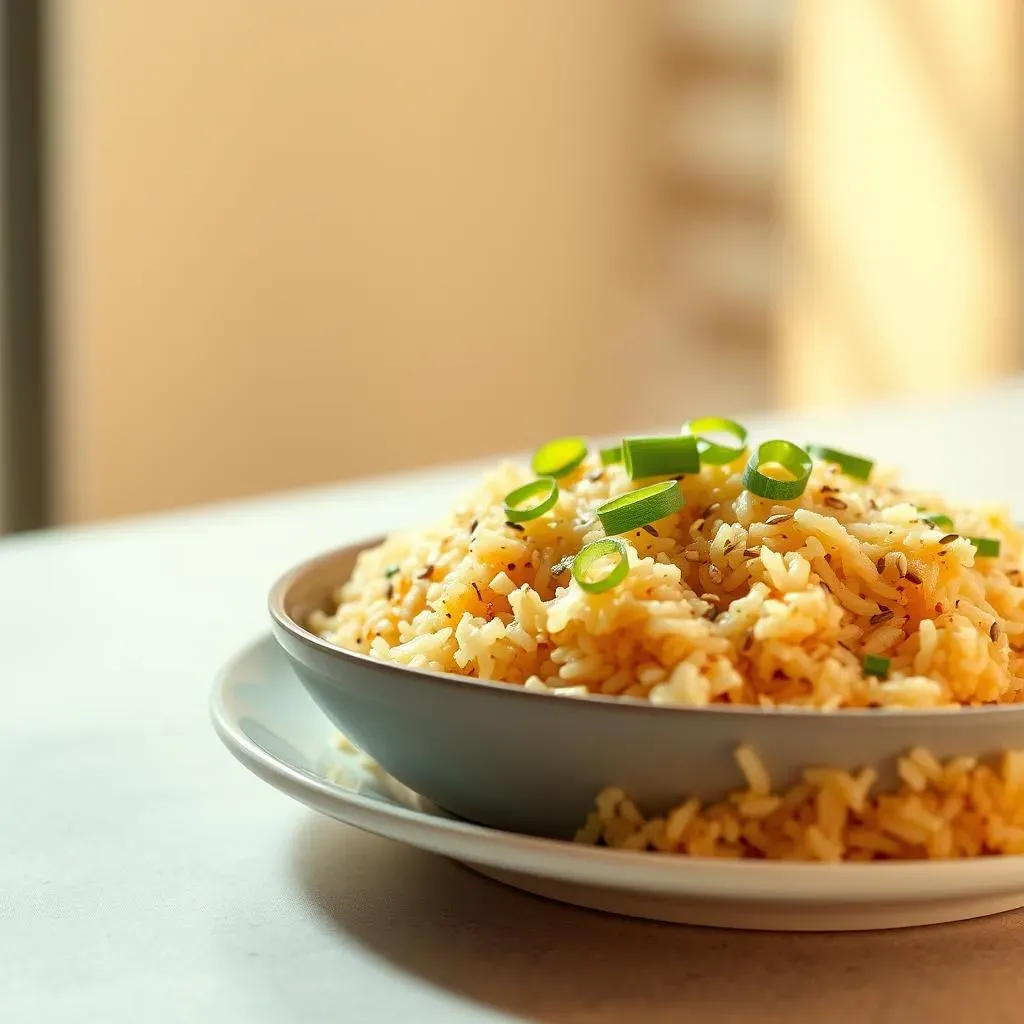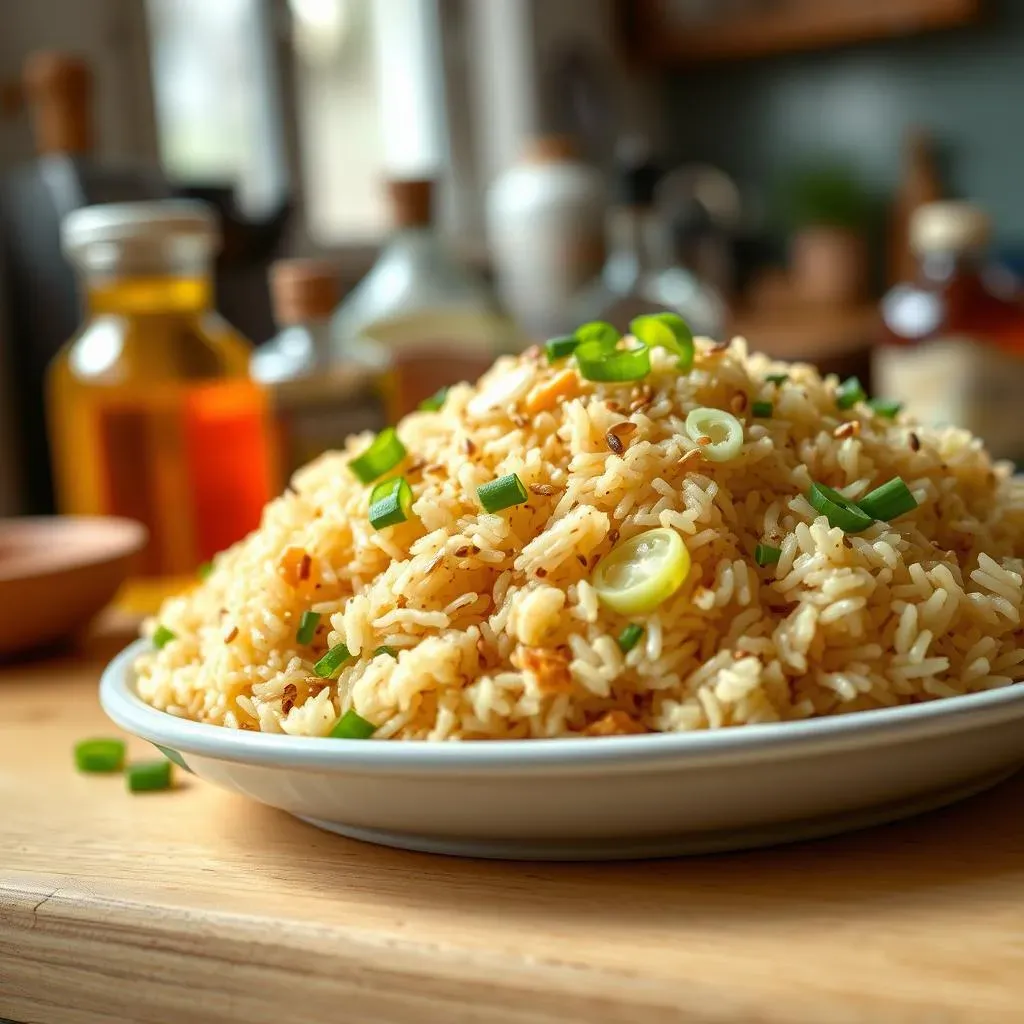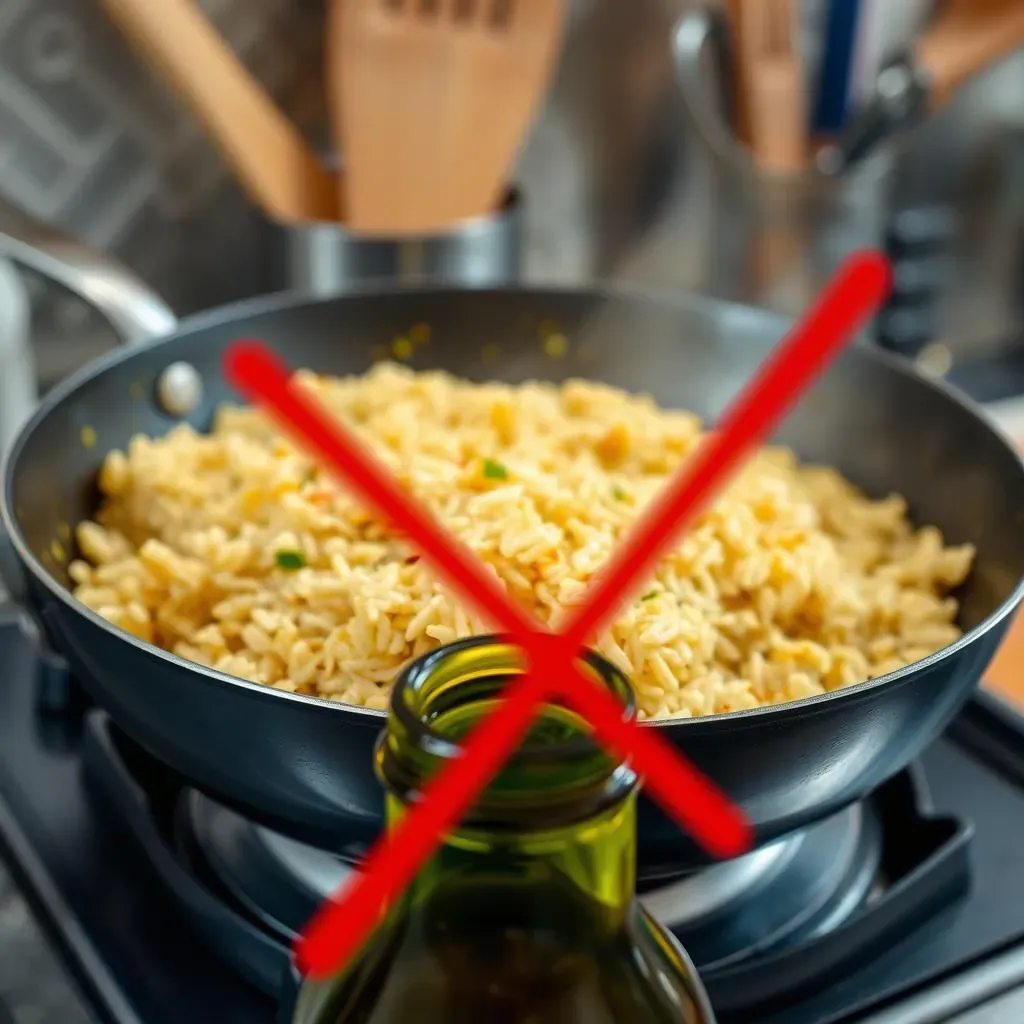Table of Contents
Ever wondered why your homemade fried rice doesn't quite taste like your favorite takeout? The secret isn't just in the ingredients, it's also about the oil. Choosing the right oil is crucial, and it's more than just grabbing any bottle from your pantry. This article will answer the burning question: "what is the best oil for fried rice?" We'll explore why the smoke point of an oil matters, which oils are your best allies in the kitchen, and which ones you should absolutely avoid. Think of it as your guide to mastering the art of fried rice, from choosing the perfect oil to perfecting your cooking technique. Get ready to elevate your fried rice game, one oil at a time. We’ll cover the best options for flavor and high-heat cooking, ensuring your fried rice is never soggy or burnt. Let's get cooking!
Choosing the Right Oil for Fried Rice: Smoke Point Matters

Choosing the Right Oil for Fried Rice: Smoke Point Matters
Why Smoke Point is Your Best Friend
So, you’re ready to whip up some fantastic fried rice? That's awesome! But before you grab just any oil, let's talk smoke points. It's not some fancy cooking term; it's actually super important. The smoke point is the temperature at which an oil starts to break down and, well, smoke. When oil smokes, it doesn't just make your kitchen smell like a campfire, it also releases some not-so-great stuff and can make your food taste burnt. For fried rice, you need high heat to get that perfect, slightly crispy texture. Therefore, you need an oil that can handle the heat without breaking down.
High Heat = High Smoke Point
Think of it like this: if you're going to run a marathon, you need the right shoes, right? Similarly, if you're going to cook fried rice at a high temperature, you need an oil that can keep up. Oils with low smoke points are like wearing flip-flops in a marathon. They just won’t cut it. Using an oil with a low smoke point will not only ruin the flavor of your fried rice, but it can also release harmful compounds. We are aiming for delicious, not disastrous. So, choosing an oil with a high smoke point is a non-negotiable for fried rice. It’s the first step to getting that restaurant-quality taste at home.
Oil Type | Approximate Smoke Point (°F) | Suitability for Fried Rice |
|---|---|---|
Canola Oil | 400 | Excellent |
Peanut Oil | 450 | Excellent |
Avocado Oil (Refined) | 520 | Excellent |
Extra Virgin Olive Oil | 375 | Poor |
Coconut Oil (Unrefined) | 350 | Poor |
The Science Behind the Sizzle
So, what happens when an oil goes past its smoke point? Well, the fats in the oil start to break down. This process not only changes the flavor of the oil, but also creates free radicals, which are not something you want in your food. Using an oil with a high smoke point keeps the fats stable and the flavor clean. It allows you to cook your ingredients quickly and evenly, without the risk of burning. It’s all about getting that perfect sizzle without the smoke. It ensures your fried rice is flavorful, not bitter, and safe to eat. It’s a small step that makes a huge difference.
Recommended Oils for Fried Rice: Flavor and Function

Recommended Oils for Fried Rice: Flavor and Function
Neutral Oils: The Unsung Heroes
Okay, so now that we know about smoke points, let's talk about which oils are actually good for fried rice. Sometimes, you want the oil to just do its job without adding a ton of flavor. That's where neutral oils come in. These are your workhorses, the ones that let the flavors of your veggies, rice, and proteins shine. Think of them as the blank canvas for your fried rice masterpiece. They're not trying to steal the show; they just want to make everything else taste better. These oils have high smoke points, making them perfect for the high-heat cooking we need for that lovely, slightly charred fried rice.
Canola oil is a fantastic example. It's readily available, affordable, and has a nice, high smoke point. It's like the reliable friend who's always there when you need them. Another great option is refined avocado oil. It has a super high smoke point, even higher than canola, and it has a very subtle flavor. It is the secret weapon for fried rice aficionados. These oils won't interfere with the taste of your ingredients, letting your carefully chosen flavors come through.
Flavorful Oils: Adding a Little Zing
Now, if you’re feeling a bit adventurous, you might want to experiment with oils that add a touch of flavor to your fried rice. These are the oils that bring a little "oomph" to the party. They don't overpower the dish but add a subtle layer of complexity. It's like adding a pinch of salt to caramel; it just enhances the overall experience. When using flavorful oils, remember to use them judiciously to avoid overpowering the other ingredients.
Peanut oil is a great choice, it has a slightly nutty flavor that complements many of the classic fried rice ingredients. It also boasts a high smoke point, making it suitable for high-heat cooking. Sesame oil, on the other hand, is a flavor powerhouse. However, it has a low smoke point, so it’s best used as a finishing oil. Drizzle a touch of toasted sesame oil at the end, right before serving, to add a lovely aroma and nutty flavor. These oils are a great way to take your fried rice from good to unforgettable.
Oil Type | Flavor Profile | Best Use |
|---|---|---|
Canola Oil | Neutral | Everyday cooking, high heat |
Refined Avocado Oil | Very Subtle | High heat, versatile |
Peanut Oil | Mildly Nutty | Adding flavor, high heat |
Toasted Sesame Oil | Strong, Nutty | Finishing, low heat |
Oils to Avoid When Making Fried Rice

Oils to Avoid When Making Fried Rice
Low Smoke Point Oils: The Fried Rice Foe
Alright, so we've talked about the heroes, now it's time to discuss the villains of fried rice – oils with low smoke points. These oils, while delicious in other applications, are just not cut out for the high heat of a wok or frying pan. Think of them as the delicate flowers of the oil world; they just can't handle the heat. Using them for fried rice is a recipe for disaster, leading to a burnt, bitter flavor and potentially releasing harmful compounds. It's like trying to use a butter knife to chop wood; it's just not the right tool for the job. So, let's take a look at some of the common culprits you should keep away from your fried rice.
Olive Oil and Friends: Best Left for Other Dishes
Extra virgin olive oil, while amazing for salads and drizzling on bread, is a big no-no for fried rice. It has a relatively low smoke point, meaning it will start to break down and smoke very quickly when heated. This will not only ruin the flavor of your dish, but also create a kitchen full of smoke, which is not ideal, unless you want to feel like you're camping. Unrefined coconut oil is another one to avoid. While it has a lovely coconutty flavor, it also has a low smoke point. It will burn easily and leave your fried rice with an unpleasant taste. Other oils with low smoke points, such as butter and flaxseed oil, should also be kept far away from your wok when making fried rice. Save them for other culinary adventures.
Oil Type | Approximate Smoke Point (°F) | Why Avoid |
|---|---|---|
Extra Virgin Olive Oil | 375 | Low smoke point, burns easily |
Unrefined Coconut Oil | 350 | Low smoke point, strong flavor when burned |
Butter | 302 | Very low smoke point, burns quickly |
Flaxseed Oil | 225 | Extremely low smoke point, not suitable for cooking |
Remember, the goal is to get that perfect, slightly crispy texture without any burnt taste. Using the wrong oil can quickly turn your fried rice from a delicious meal to a culinary catastrophe. So, when in doubt, always go for oils with high smoke points when making fried rice. It's a small step that will make a massive difference in the final result. Trust me, your taste buds will thank you for it.
Perfecting Your Fried Rice: Oil and Technique

Perfecting Your Fried Rice: Oil and Technique
The Art of the Sizzle
Okay, so you've got your oil sorted, now let's talk technique. It's not just about throwing everything into a pan and hoping for the best. Making great fried rice is a dance between heat, oil, and ingredients. First off, make sure your pan or wok is nice and hot before you add the oil. You want that initial sizzle when the oil hits the pan; it's like the starting gun for a delicious race. Once the oil is shimmering, you're ready to start adding your ingredients. Remember, it's all about high heat and speed. This ensures your rice gets that slightly crispy texture without becoming soggy. It’s about cooking fast and furious, not slow and steady.
Also, don't overcrowd the pan, it will lower the temperature and you will end up with mushy rice. Cook in batches if you have a lot of ingredients. It's better to take a little more time and get it right than to rush it and end up with a mediocre dish. And most importantly, don't be afraid of that high heat; it's your friend in the world of fried rice. It’s what gives it that signature wok-hei flavor, the slight char that makes it so irresistible.
Rice and Oil: A Perfect Pair
Now, let's talk about the rice itself. Day-old, cold rice is your best friend here. Freshly cooked rice is often too moist and will just clump together. Day-old rice has had time to dry out a little, which helps it fry up nicely. When you add the rice to the pan, make sure to break it up so that it cooks evenly. You want every grain to be coated in that glorious oil and heat. It’s like giving each grain a little hug, ensuring they all get their fair share of the flavor party. Don't be shy with the oil, either. You need enough to coat the rice and ingredients, but not so much that it becomes greasy. It's a delicate balance, but once you get the hang of it, you'll be a fried rice pro.
Also, consider adding the oil in stages. You can start with a base amount to cook the ingredients, and then add a little more when you add the rice. This helps ensure that everything is cooked properly and that the rice doesn't stick to the pan. It's like layering the flavors and textures, building a more complex dish with each step.
Step | Action | Why It Matters |
|---|---|---|
1 | Heat pan/wok | Ensures oil is hot for cooking |
2 | Add oil | Provides cooking medium |
3 | Add ingredients | Start cooking veggies and protein |
4 | Add day-old rice | Avoids mushiness, allows for even frying |
5 | Stir-fry quickly | Ensures even cooking, prevents burning |
Finishing Touches for Flavor
Finally, let's talk about the finishing touches. Once your fried rice is cooked, it's time to add those final flavor boosters. A drizzle of toasted sesame oil at the end is a game changer. It adds a nutty aroma and a depth of flavor that will make your fried rice irresistible. You can also add a splash of soy sauce or a sprinkle of green onions for extra flavor and color. This is your time to shine, to add your own personal touch to the dish. It's like putting the cherry on top of a sundae; it's the final touch that makes it complete.
Remember, making great fried rice is all about attention to detail. From choosing the right oil to using day-old rice, every step matters. With a little practice and patience, you'll be whipping up restaurant-quality fried rice in no time. So, grab your wok, heat up that oil, and let's get cooking. It’s more than just a meal; it’s an experience, a journey of flavors and textures. Now it's your turn to make it your own.